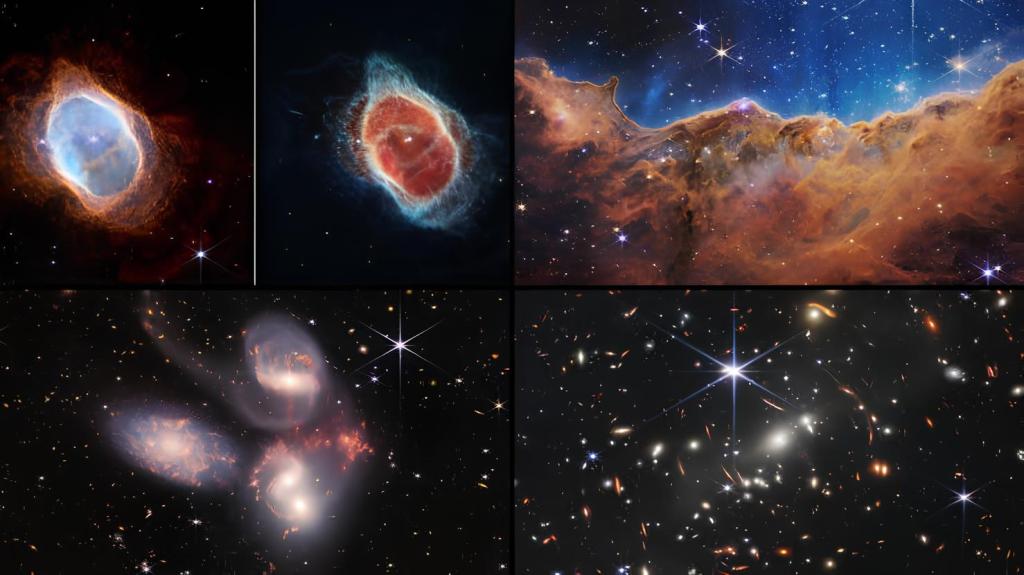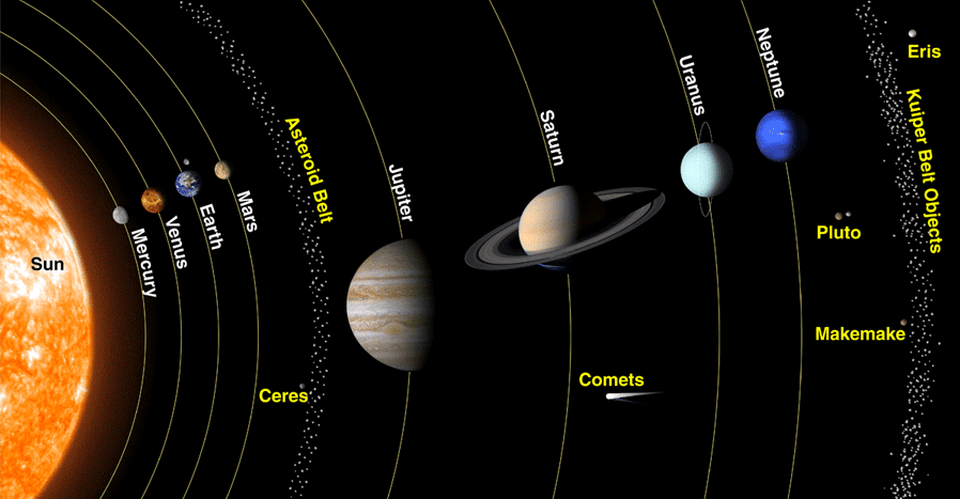APA 7: ChatGPT. (2023, August 9). The Enigmatic Charm of Stars. PerEXP Teamworks. [Article Link]
The stars, shimmering jewels adorning the velvet canvas of the night sky, have ignited humanity’s imagination for millennia. These celestial luminaries, born from the crucibles of cosmic evolution, have guided sailors across uncharted seas, inspired timeless tales, and held profound significance in cultures around the world. This article embarks on an exploration of the captivating world of stars, revealing their enigmatic presence, their impact on daily life, and the historical tapestry they have woven through cultures across time and space.
The shining presence of stars in the sky
In the expansive canvas of the night sky, the luminous gems that captivate our gaze are none other than the resplendent stars. These celestial beacons have been the subjects of fascination and contemplation for humanity since time immemorial. Their shimmering presence, scattered across the dark expanse, tells stories of cosmic birth, life, and sometimes even spectacular deaths. As we lift our eyes to the heavens, we are beckoned to explore the enigmatic beauty and profound significance of stars in the cosmos.
At the heart of the star’s mystique lies its incredible journey through the vast expanse of space and time. These luminous spheres, primarily composed of hydrogen and helium, fuse these elements in their cores through a process called nuclear fusion. This fiery dance not only releases energy that sustains a star’s brilliance for millions to billions of years but also forges heavier elements, which, upon the star’s eventual demise, enrich the universe with the building blocks of future planets and life.

The night sky itself becomes an ethereal canvas, each star a unique stroke of light against the velvet backdrop. Some stars gleam with the intensity of a thousand suns, while others emit a gentle, distant glow that hints at their immense distance. The classification of stars into spectral types, from the fiery blues to the warm oranges, narrates the tale of their temperatures, compositions, and stages of evolution. Moreover, stars are not solitary entities; they engage in celestial ballets with partners, often in binary or multiple systems, their gravitational waltzes shaping each other’s destinies. Stellar clusters adorn the cosmos, presenting an awe-inspiring sight where numerous stars congregate, their collective glow illuminating the vast realms they inhabit.
The role of stars transcends their aesthetic allure. Their celestial whispers reach us across the void, conveying the secrets of the universe. The light from distant stars, traveling through the aeons, carries within it the history of the cosmos, allowing astronomers to explore the universe’s infancy and evolution. Supernovae, the cataclysmic explosions of massive stars, release energy equivalent to the output of an entire galaxy, painting the heavens with fleeting brilliance and gifting the cosmos with elements crucial for life’s existence.

As we contemplate the stars, we are not mere witnesses; we are interconnected with them in the most elemental way. The atoms that comprise our bodies, the oxygen we breathe, and the carbon that defines life itself were birthed in the fiery cauldrons of stars. Thus, when we look to the stars, we look into our own origins, understanding that we are intrinsically bound to the universe. In the tapestry of existence, the stars stand as luminescent threads that weave together science, beauty, and our collective narrative. Their shimmering presence invites us to ponder the mysteries of creation, inspiring poets, scientists, and dreamers alike to venture beyond the terrestrial horizon. The stars beckon us to seek not only the light they cast upon us but also the truths they unveil about the cosmos and our place within it.
The importance of stars in daily life and cultures
Stars, those distant luminous spheres that adorn the night sky, have held an enduring fascination for humanity since time immemorial. Beyond their scientific significance, stars have played a profound role in shaping cultures, histories, and worldviews across civilizations. Through their celestial dance, stars have guided navigation, inspired myths and legends, and connected humanity to the vast cosmos, serving as both timekeepers and storytellers.
Throughout history, stars have been invaluable navigational tools, guiding travelers across land and sea. Ancient mariners used constellations to chart their courses, relying on the North Star to determine direction. The constancy of celestial patterns facilitated exploration and trade, fostering the exchange of knowledge and cultures across continents. Polynesian wayfinders, for instance, perfected the art of celestial navigation, relying on the positions of stars to traverse vast expanses of the Pacific Ocean, leaving an indelible mark on their cultural identity.

Yet, stars’ influence transcends practical applications. Cultures worldwide have woven captivating myths and narratives around the constellations that stretch across the night canvas. These celestial stories serve as metaphors for human experiences, moral lessons, and the eternal struggle between light and darkness. The ancient Greeks envisioned their gods and heroes among the stars, immortalizing their deeds in the firmament. Similarly, the Indigenous people of Australia’s Dreamtime stories, or the Navajo’s connection to the “Black God” constellation, reflect the profound interweaving of celestial and cultural narratives.

Venus – Roman name for Aphrodite
Earth – Closely associated with Roman Terra Mater (Gaia to Greeks which is why Gi is Earth in Greek)
Mars – Roman name for Ares
Jupiter – Roman name for Zeus
Saturn – Roman name for Cronus
Uranus – The only planet that actually kept its original Greek name
Neptune – Roman name for Poseidon
(Hellenic Moon)
In religious and spiritual contexts, stars often symbolize transcendence, enlightenment, and divinity. Many ancient cultures associated stars with deities, attributing the origins of creation to celestial bodies. The Star of Bethlehem, for instance, guided the Three Wise Men to the birthplace of Jesus Christ in Christian tradition, underscoring the cosmic significance of pivotal moments in human history.
The importance of stars in daily life and cultures isn’t confined to the past. Today, stargazing continues to inspire awe and wonder, reminding us of our place in the universe. Moreover, the study of stars, astronomy, has led to remarkable scientific advancements, enabling us to comprehend the cosmos’ origins, structure, and evolution.
Throughout history, stars have not just been distant lights but integral parts of daily life, cultural narratives, and human symbolism. In particular, these symbols can be summarized in 4 bullets.:
- Navigation and timekeeping: Long before GPS, stars served as guides for seafarers and travelers, helping them navigate across vast oceans and uncharted lands. The positions of stars also marked the passage of time, influencing calendars and ancient observatories.
- Mythologies and folklore: Stars have inspired countless mythologies and folktales, reflecting diverse cultures’ beliefs, values, and creation stories. From the ancient Greek constellations to indigenous star lore, these celestial stories provide insight into the human psyche.
- Celestial omens: In various cultures, stars were seen as omens, foretelling events such as the change of seasons, impending storms, or even royal successions. Astrology, the study of celestial influences on human affairs, emerged from such beliefs.
- Scientific discovery: Stars’ study has led to breakthroughs in our understanding of the cosmos. The concept of the stellar lifecycle, the discovery of exoplanets, and the measurement of the universe’s expansion rate are some of the many contributions of stellar research.
In conclusion, the stars have played an indispensable role in shaping the course of human history and cultures. From navigating uncharted waters to inspiring the narratives that define our beliefs, stars have been pivotal to our shared human experience. As we gaze upward into the velvet expanse of the night sky, we are reminded that the luminous dots that pepper the firmament not only guide us through the dark but also serve as a testament to the interplay between the cosmic and the human.
Stars, the celestial gems that bridge the gap between the heavens and humanity, continue to be a source of awe and inspiration. Their luminous presence in the night sky captivates our senses, connecting us to the mysteries of the universe. As they weave their narratives into our cultural fabric, stars remind us of our shared history and the human quest to unravel the cosmos’ mysteries. Whether serving as guides for sailors, characters in mythologies, or subjects of scientific exploration, stars continue to illuminate not just the night sky but also the boundless realm of human imagination.
Resources
- BOOK Kaler, J. B. (2002). The Ever-Changing Sky: A Guide to the Celestial Sphere. Cambridge University Press.
- BOOK Kelley, D. H., & Milone, E. F. (2011). Exploring ancient skies. In Springer eBooks.
- BOOK Ruggles, C. L. (2005). Ancient Astronomy: An Encyclopedia of Cosmologies and Myth. ABC-CLIO.
- BOOK Krupp, E. C. (1983). Echoes of the ancient skies: The Astronomy of Lost Civilizations. HarperCollins Publishers.
- BOOK Dickinson, T. (2006). NightWatch: A Practical Guide to Viewing the Universe. A&C Black.












